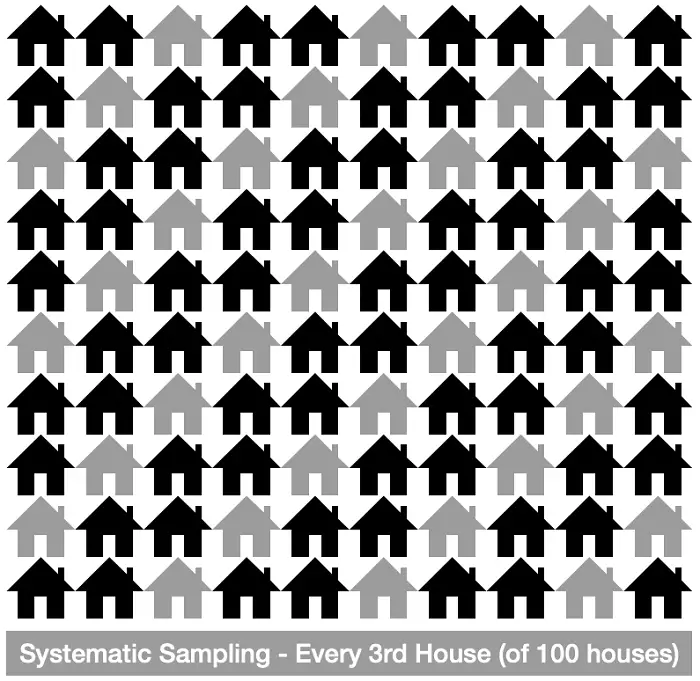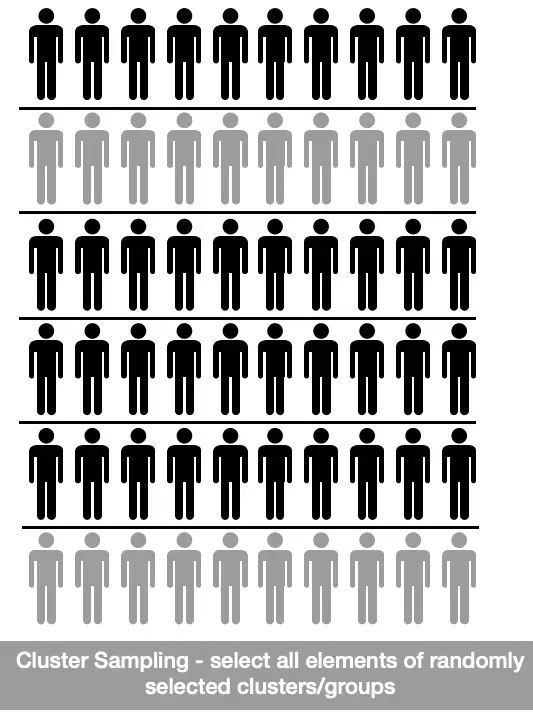** Note – This article focuses on understanding part of probability sampling techniques through story telling method rather than going conventionally.
Introduction
You all have heard this term many times either in Television, Newspaper, or through your professor. I would be hereby presenting you the most simplistic way to get to know the term ‘sampling’ rather than conservative approach to knowing it. Before getting this term lets look at what else need to be understood
Population is nothing but a whole group which we are focusing on for taking the survey for obtaining a certain kind of information. This population would frame the initial path for sampling as we have to know our population its characteristic before getting our hands into the sea. Population here not only means people population can be a population of houses – total houses, population of pen – total pen, basically anything..
Sample is nothing but a data collection from a part of the whole population.
Need for Sampling
It becomes necessary to know why do we do sampling why not just do the population count as in whole/census. We must remember that data/survey of an entire population can’t be gathered/facilitated. Even relatively smaller population many other issues can come through, what if, the data is urgently needed. ‘Time & Money’ motivates to take sampling of an entire population instead of census.
Even in census, sampling plays an important role. Remember at your home mom while cooking vegetables put some salt in certain quantity and after sometimes check if it is good enough for serving purpose or not and then proceeding further as per the requirements. Similarly sampling here acts as a salt in this case to the government/ conducting agency.
Types of sampling
Now we get to know, that we need sampling for various purposes and reasons.
But did you notice here we are out in the field for taking sampling and suddenly realized wait! Out of the total population whom we are going to take survey, in other terms, how to select what members of the population to sample!! Hmm it’s a tricky question! Let’s have a look on this issue.
Basically there are four methods of choosing members of the population while doing sampling : Random sampling, Systematic sampling, Stratified sampling, Cluster sampling.
Random sampling
I hope you all must have heard about lottery system. Have you observed what happens here ?
Yes, here there are slips of paper having written some numbers/names/anything and then we have to choose among those slips it is random sampling as we have got no idea about about what we choose its a total luck and no bias is observed here.
One thing to keep in mind here we need total population lists (and not a part of whole population) here for doing random sampling in order to avoid the bias to a great extent. It is generally observed that random sampling is the best way of doing sampling due to not involving any biased factor.
Example. – A polling on a national level via digital platform or as you have seen in certain videos in youtube also that youtubers asking for our suggestions in the form of MCQ in polling button featured in youtube.

Systematic sampling
I hope you know that arithmetic progression (AP) or a geometric procession (GP) follows a certain pattern or we can say a certain system to acquire their next element in their respective series like what would come next 2, 4, 6, ___ ??? 8 right. So it is proceeding in a systematic way. Similar is the condition with systematic sampling.
In this type of sampling we follow some systematic selection like every 3rd house in a population.
Example. We want to know how many houses out of 100 are having garages but you don’t have that much ample amount of time to go to conduct survey of each and every house so you decided to select every 3rd house in a 100 house locality.

Stratified Sampling
As the name suggests it has something to do with ‘strata’ which means layer, here, we can call it as classes/categories.
In this type of sampling, we divide the populations into certain classes or categories on the basis of their characteristics / features such as gender, age etc. and then we sample out the population proportionally, confused right, wait let’s see through an example
Example. Suppose we have survey 200 people in a college out of 10,000 and we have already a data of constituents like we know how many are teachers (25%), staffs (20%), UG students (35%), PG students (20%).
Here we will select the sample on the basis of their percent constituent i.e 25%, 20%, 35%, 20% respectively as mentioned above.
200 X 25% = 50 – Teachers
200 X 20% = 40 – Staffs
200 X 35% = 70 – UGs (Under graduates)
200 X 20% = 40 – PGs (Post graduates)
Total = 50 + 40 + 70 + 40 = 200
This would be our strategy in order to conduct a stratified sampling. Hope now it’s clear for all of you. Let’s move on to our next approach i.e. Cluster Sampling

Cluster Sampling
Cluster means ‘Bunch’, ‘Collections’. A bunch of grapes, A collection of cars etc. In Cluster Sampling method we divide the population into clusters/groups/bunches and then select certain whole groups randomly and survey them all (present in the selected groups). Let’s see an example
You were asked to conduct a survey in your city you divided the locality into zones or let’s say you followed the way of wards i.e you decide to conduct sampling in the currently divided zones by the municipality i.e through the way of wards. I hope you all know that our district/city has ward system (as in India), it may have been demarcated similarly in other countries by different system. Ok,
One thing to keep in mind here is the cluster sampling would be more effective if we have homogeneity with other clusters i.e the cluster have similar features to each other. Example. If the city you decide to create zones and you found that certain regions are economically well and certain are extremely backward then try to form new zones in order to be fairer & more unbiased. so now you got to know that your city has 20 wards in which you have to conduct survey. As per the concept you randomly pick 5 wards and then surveyed the people of 5 wards completely. This is what Cluster Sampling describes.

Overview
|
|||||||||||||||||||||||||
Author:
Shivanshu Shekhar
Member of NOSPlan
School of Planning and Architecture, Bhopal